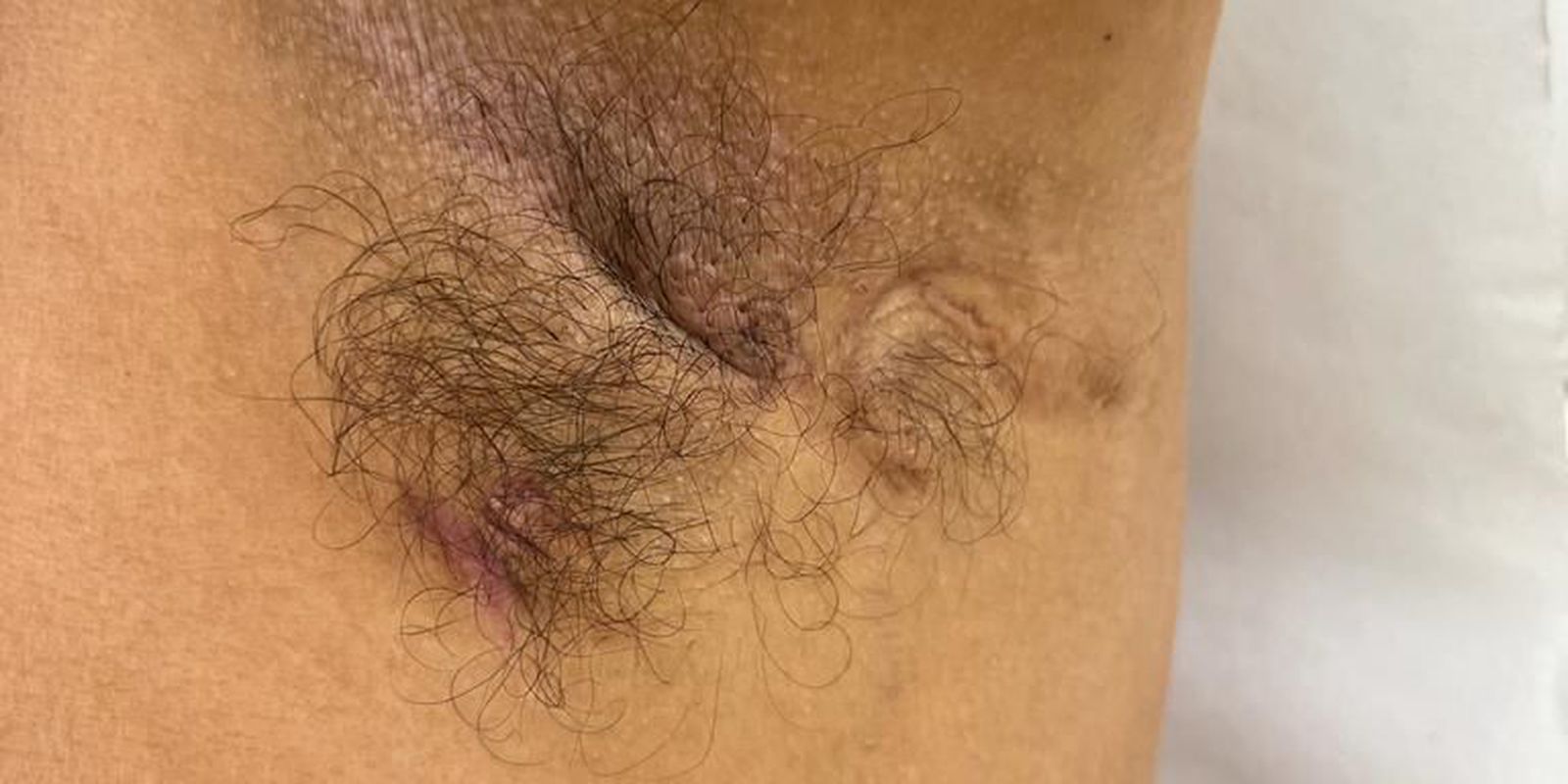A little-known skin disease, hidradenitis suppurativa is a neglected disease that can lead to depression, anxiety, and even social isolation and professional difficulties. In an interview with Brazil Agencydermatologist Wagner Galvão, a specialist in the disease, listed among the risk factors for hidradenitis suppurativa obesity, smoking and friction in the skin folds.
Hidradenitis suppurativa is a painful and chronic inflammatory skin disease characterized by nodules and lumps that frequently appear in regions of large folds in the body, such as the armpits, under the breasts, buttocks and between the genital regions. Eventually, it can also appear on the scalp, neck and face. These lumps, which can be the size of a pea to a marble, tend to ooze pus. Although the disease is linked to genetic predisposition, obesity and smoking can be triggers to aggravate the inflammatory condition.
Galvão, who is a member of the Brazilian Society of Dermatology (SBD) in São Paulo, where he participates in the Autoimmune Diseases Group, highlighted the importance of early diagnosis. “To intervene early, so that the person does not, with the progression of the disease, have the complications and problems that are the great burden of hidradenitis suppurativa”.
As it is a disease that evolves in crisis, the lesions that appear in the armpits, groin, buttocks become red, painful, often releasing pus. The patient’s normal history is to seek help in the emergency department. Wagner Galvão stated, however, that emergency room physicians often find it difficult to make a diagnosis. “Typically, the diagnostic delay between the appearance of the lesions and the patient arriving at the diagnosis of hidradenitis suppurativa takes 12 years and he goes through, on average, 14 doctors, until he gets the diagnosis”, revealed the specialist.
The concept of prevention is equivalent to secondary prevention. That is, identify before not to evolve. “To make the diagnosis, I need the typical lesion in the typical place of a seizure. Without the injury, I can’t say anything. For me to be able to intervene, the person already has the problem”. Galvão highlighted that, when the dermatologist intervenes early, he manages to avoid major complications. It means that, in this way, the lesions, or lumps, do not evolve to the point of harming the person and causing him to go into depression. “We greatly minimize the impacts of the disease, which can be dismal. When we diagnose early, it is the window of opportunity to prevent the evolution of the disease ”, he reinforced.
Prevalence
Prevalence studies show that hidradenitis suppurativa affects 0.4% of the population in Brazil. “Often, this prevalence is underestimated, due to delay in diagnosis. In the world, the proportion of severe cases is, in general, around 5%”. In Brazil, serious cases represent almost 40%, informed Wagner Galvão. According to him, cases are more common in people of African descent and in women. “About 60% to 70% of cases are in women,” he reported.
There is a reason for this. This is because, normally, the disease is associated with a better defined hormonal phase in women than in men. “I have more cases in women. But when I only look at the most severe cases, I don’t see such a big difference between men and women.” In men, there are fewer cases but, proportionally, there are more serious cases.
By age group, the disease typically begins at puberty or in the prepubertal phase, around 10 years, 12 years, 14 years, and may appear later. It is less common in childhood, when it is associated with syndromes of some autoinflammatory diseases.
This week, Galvão participates in the European Congress on Hidradenitis Suppurativa. In that region, the diagnosis is better, said the Brazilian doctor, who is going to participate in the discussions about the disease.
Treatment
Wagner Galvão explained that the treatment for the disease depends on the stage of severity. “There has been great progress in recent years in the treatment of hidradenitis suppurativa,” he commented. In mild cases, creams and ointments are used, in addition to other measures to reduce crises. In cases ranging from intermediate to severe, there is an immunobiological medication called Adalimumab, currently available in Brazil in the Unified Health System (SUS) and also covered by health plans. At the site of the Ministry of Health, SUS published the first Clinical Protocol of Therapeutic Guidelines (PCDT) to treat the disease. The protocol includes innovative therapies, such as biological drugs, currently also available in private health plans.
In the summer, due to temperature changes, special care must be taken, such as looser clothes and light fabric on hotter days, which do not rub the skin, experts warn. Wagner Galvão is also a physician at Hospital Sírio-Libanês and Hospital Alemão Oswaldo Cruz, both in São Paulo.

















